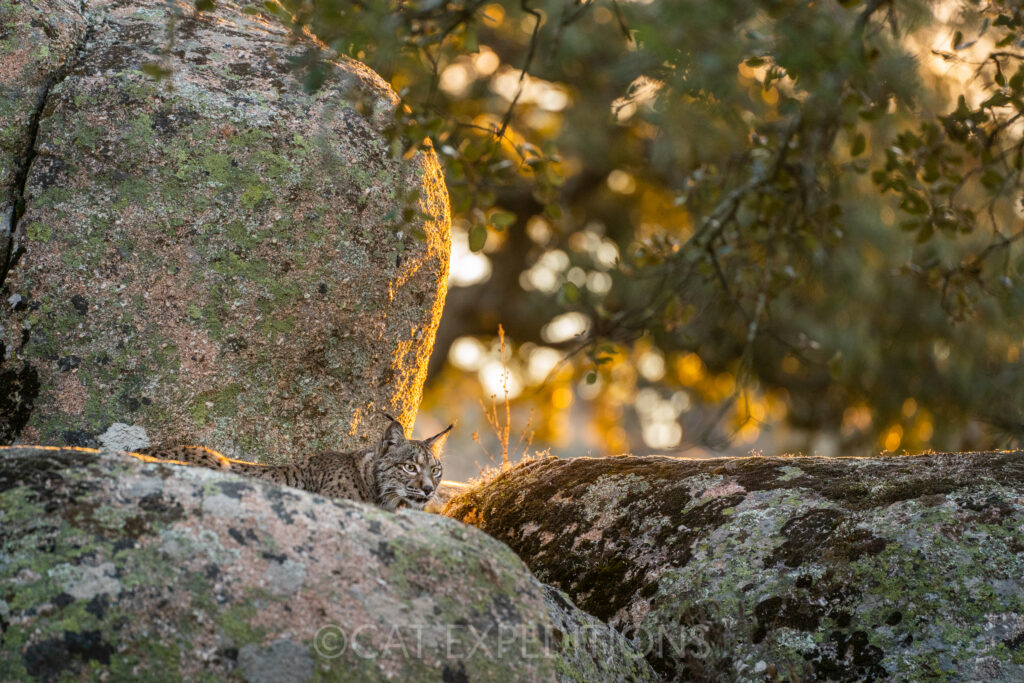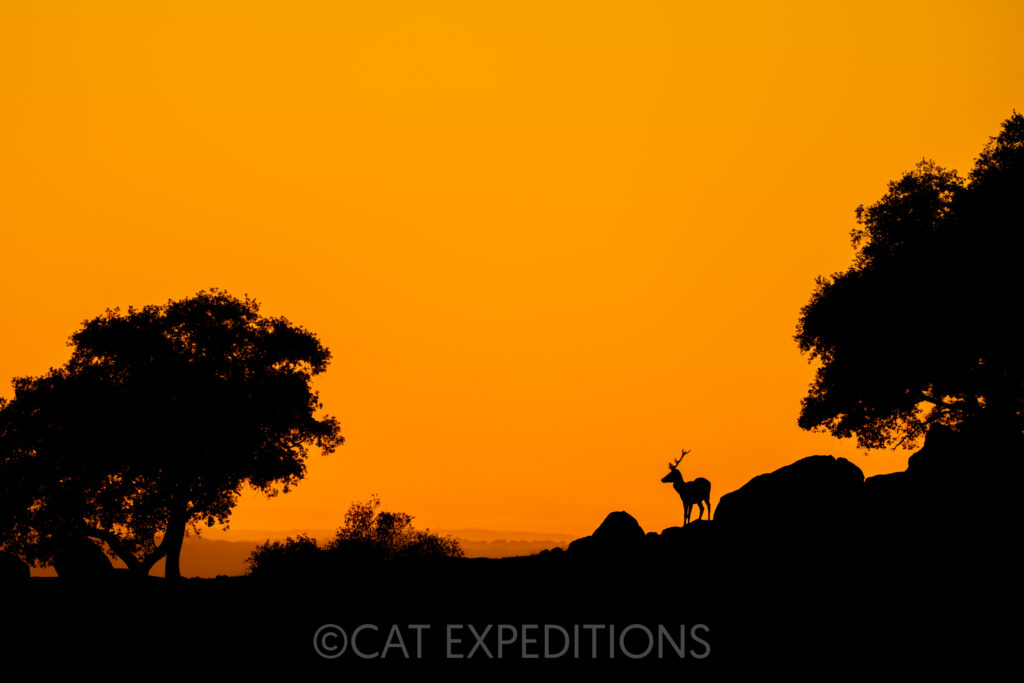In 2022, we led our Iberian Lynx of Spain photo tour in early January. Despite just having one cat expeditions guest, after two had to bow out last minute due to covid, we had a fantastic tour to look for this elusive wild cat. Read on for our Iberian Lynx of Spain Photo Tour 2022 Trip Report.

Highlights of the 2022 Iberian Lynx Photo Tour
Iberian Lynx: In total, we photographed four different Iberian lynx. Sightings averaged six minutes, at an average distance of 25 meters. For our closest encounter, we had the Iberian lynx at just three meters!

Red Deer: We had some beautiful moments with these ungulates (in the US, we would call them elk), including some beautiful sunset silhouettes!

Songbirds: Two of our days we spent in blinds, where we had some nice moments with songbirds, like European Crested Tit (Lophophanes cristatus) and Azure-winged Magpie (Cyanopica cyanus).


Iberian Lynx of Spain Photo Tour Itinerary
Day 1: Arrival in Madrid. Drive four hours to the lynx area, near Andujar. Afternoon lynx safari, dinner back at accommodations.
Day 2: All day blind at popular lynx crossing area (not baited)
Day 3: All day blind at popular lynx crossing area (not baited)
Day 4: All day searching for lynx in public areas.
Day 5: All day searching for lynx in public areas.
Day 6: All day searching for lynx in public areas.
Day 7: Morning lynx safari, then drive back to Madrid. Fly out.
Detailed Trip Summary of our 2022 Iberian Lynx Photo Tour
Day 1: We all arrived in Madrid in the morning. It is a bittersweet moment as we are excited to finally be together, but two of our guests had to cancel last minute due to covid, so in the end it is just one guest, and us two tour leaders (Sebastian and Rachel). We started to make the journey south, to the lynx spotting area, about a four hour drive. We settled into the hotel, had lunch, and then left for our first lynx safari. We classify this species of cat as a medium difficulty, hoping to have one good photo opportunity with the lynx for the duration of the tour. We showed Adam, the guest, the area we would spend most of our time looking for the lynx. We spotted a mouflon (introduced for hunting), and some red deer. After sunset, we drove back slowly to our accommodations, about twenty minutes away.
Day 2-3: After an early breakfast, we made our way to a large private estate that has blinds set up near areas lynx often like to walk. We settled into the blind before the sun rose and had high hopes for a cat to show. We got skunked both days, and only had a few songbirds come in to drink at a small pond near the blind. We strongly believe in not using bait (and no one should be using it as it is illegal to do so in Spain) so we knew our chances were low, but with the world’s most endangered cat, it is all about patience.

Day 4: We set up in a public area to look for lynx. The spot we chose meant we were almost alone, which is what we wanted. The morning remained quiet, with a few red deer to keep us occupied. Then, in the afternoon, we spotted a lynx, far far away. Probably around 500 meters. Amazing to have as a first sighting, but not close enough for photography.
Day 5: We again set up in the same public area. Almost no one else was around. We kept listening for mating calls, but all was quiet. At lunch we decided to drive around a little. Thirty minutes into the car ride, we saw a lynx, just a few meters off the road. I told Adam to get out, while I pulled over the car. We then got into position, based on where we thought the lynx will go. A few seconds later, the lynx was right next to us, just three meters away. It was an incredible sighting, but the only shot Adam could get had a fence obscuring the view of the cat (this fence is in place to keep red deer in the area, used for hunting). I did not take any photos, to ensure I could help Adam as much as possible.
Day 6: It was our final full day. I was desperately hoping to get one more viewing of the cat that was close enough and had no obstructions. Once again, we set-up in my favorite public area. Just a couple of other people were around. I heard an alarm call and told Adam to come over to me, quickly. He did his best to speedwalk, without being in a full sprint, to make sure he kept his sound down. Then, in between some rocks, a lynx appeared, perfectly camouflaged. I told Adam to stand in front of me, so he could get the best angle for a photo. He snapped away, though the only evidence of it, was his finger going up and down (with both of our mirrorless cameras, no sound was made). The lynx was occupied looking down the valley, maybe looking for a mate. After three minutes in the rocks, he continued his walk down the valley and disappeared as quickly as he appeared. It was our best encounter, on the final day! Adam got great shots he was happy with, and I was so relieved to have had that kind of fantastic encounter. The rest of the day was once again quiet, though we did finish it off with some red deer at sunset.


Day 7: Still buzzing from the day before, we didn’t mind that our final morning was quiet. We went back to the hotel, had a delicious large breakfast, and made our way back to Madrid. Adam flew out that night and Rachel and I celebrated another successful tour with an overly heavy dinner.
Species List for the Iberian Lynx Photo Tour 2022
Mammals
| Iberian Hare | Lepus granatensis |
| Iberian Lynx | Lynx pardinus |
| Iberian Red Deer | Cervus elaphus hispanicus |
| Mouflon | Ovis orientalis |
Birds
| Red-legged Partridge | Alectoris rufa |
| Eurasian Collared-Dove | Streptopelia decaocto |
| Cinereous Vulture | Aegypius monachus |
| Eurasian Griffon Vulture | Gyps fulvus |
| Spanish Imperial Eagle | Aquila adalberti |
| Little Owl | Athene noctua |
| Azure-winged Magpie | Cyanopica cyanus |
| European Crested Tit | Lophophanes cristatus |
| Eurasian Blue Tit | Cyanistes caeruleus |
| Common Chaffinch | Fringilla coelebs |
| Common Redstart | Phoenicurus phoenicurus |
